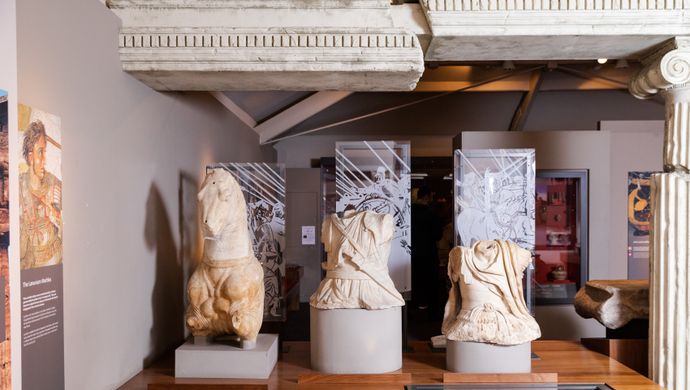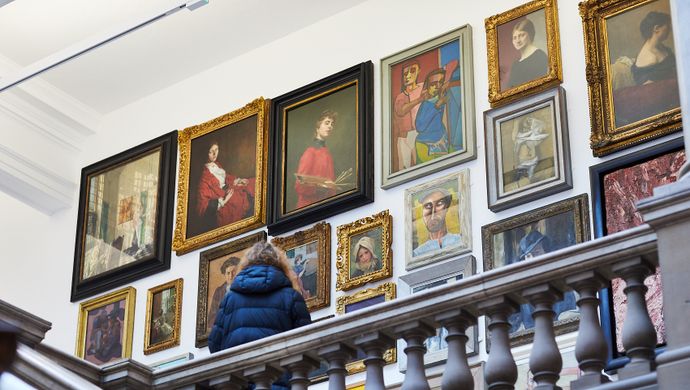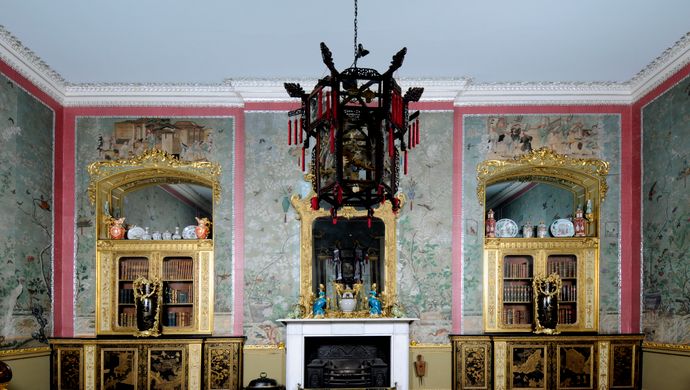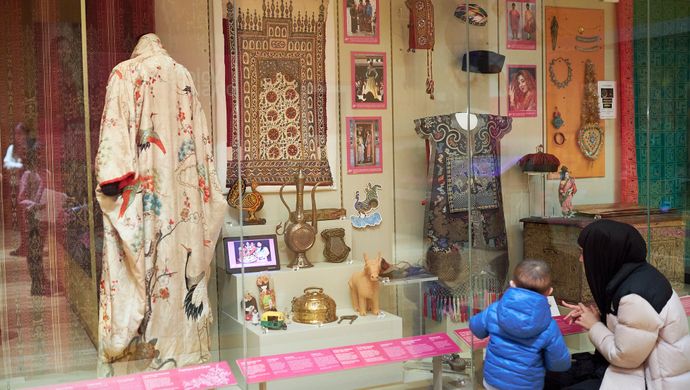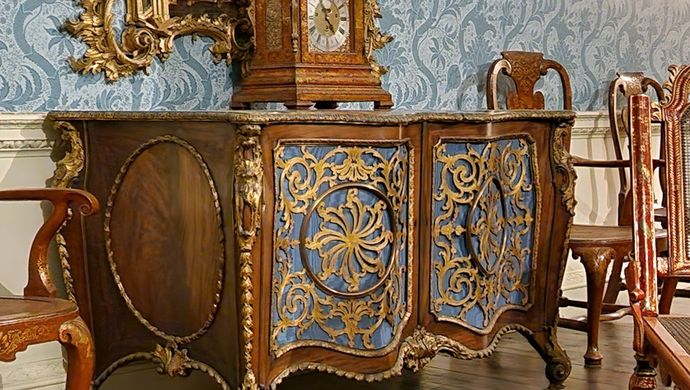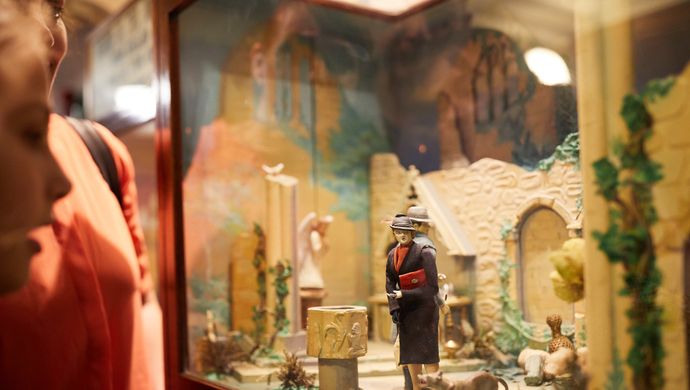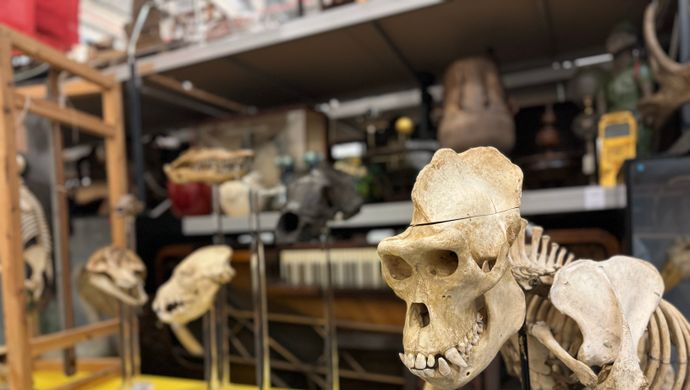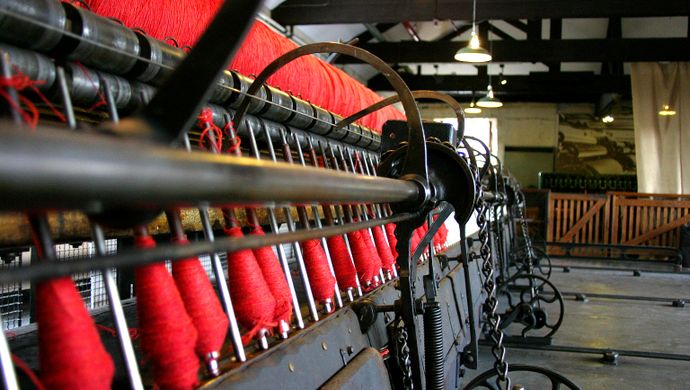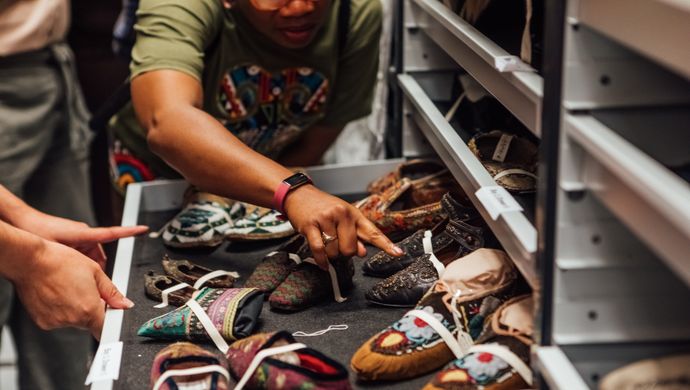
Dress and Textiles
The Leeds dress and textiles collection details the history of what people have worn in the past.
It includes the textiles they have used for their clothing, furnishing and decorating their homes.
The dress collection is predominantly British and consists of clothes and accessories for men, women and children, mainly dating from the 18th century onwards. Many of the items have been worn, bought or made in Leeds and the surrounding Yorkshire region.
Outstanding garments include an 1881 dress by Charles Worth, worn by the daughter of a Yorkshire mill owner, and a particularly strong collection of garments dating from the 1960s by some of the best known British fashion designers: Jean Muir, Bill Gibb, Zandra Rhodes, Vivienne Westwood, Bruce Oldfield, and Philip Treacy.
A significant and unique area of the collection is the large quantity of material relating to the tailoring manufacturing industry in Leeds. The collection includes items such as tools and equipment, suits, photographic archive and promotional material. Although a number of the Leeds tailors are represented in the collection, the two Leeds’ manufacturers best represented are Burton and Hepworths.
The textile collection includes some extremely rare fragments dating back to the 15th century. The collection contains fragments and also complete items highlighting the wide variety of techniques used in the production of textiles for dress, furnishings and interiors.
The online exhibits Fast x Slow Fashion and The New Look, along with many items from the collections are available to view online on our Google Arts & Culture page.
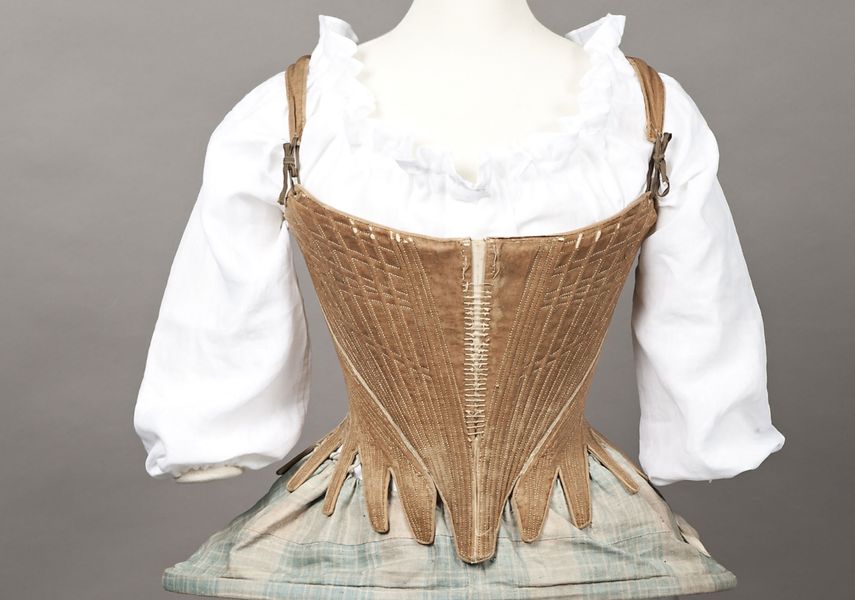
Collection highlight
Pair of Stays and Hoop
This pair of stays and hoop date from about 1760 to 1780. Worn under a dress, the stays – the word used for corset during the 1700s – and the hoop, which is worn tied to the waist, created the fashionable female shape of the time. The stays are made up of many layers and stiffened with strips of whalebone, inserted between rows of fine hand stitching. Strips of cane are used to shape the hoop.
Both these objects are part of a collection of dress and textiles that all came from one collector called Kenneth Wright Sanderson (1896 – 1977). Sanderson was quite a flamboyant figure, who came from Leeds and was extremely passionate about historic dress. In the early 20th century Sanderson amassed a unique collection of items, in particular, 18th century fashions. He was a fervent advocate of the importance of history dress at a time when few people recognised its historic importance.

